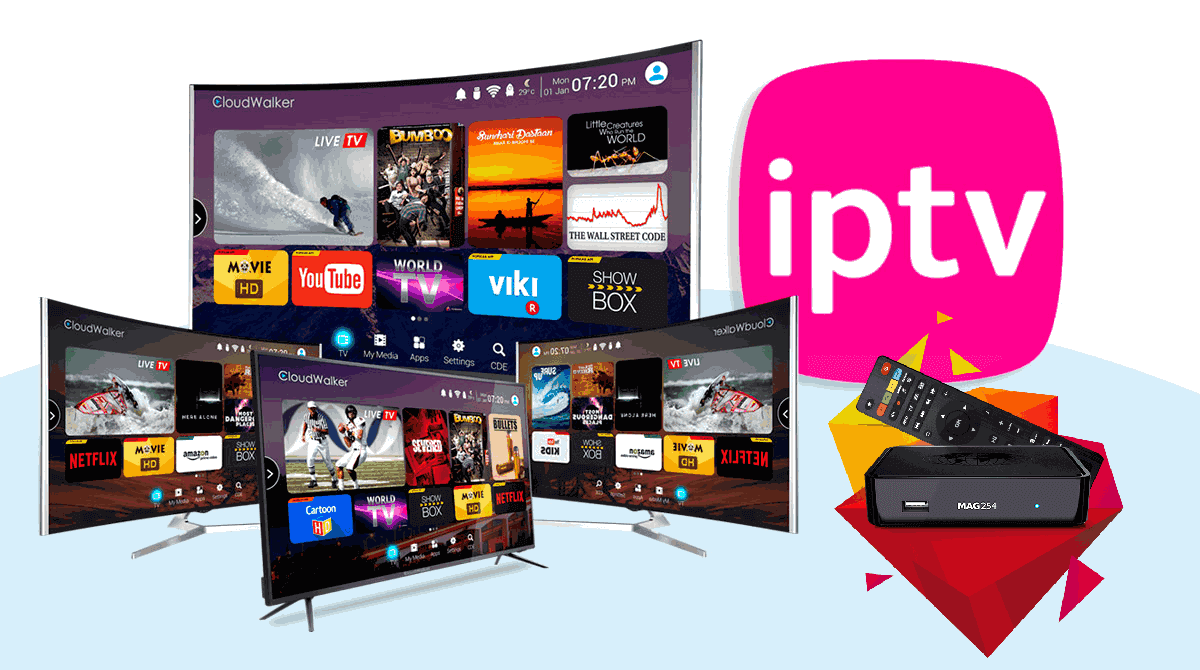The Internet Protocol television system, also known as IPTV, is a platform that delivers television programs over the Internet. With the help of the app known as IPTV Smarter Pro, You can easily access multiple channel playlists from different subscription plans.
What is IPTV ( Internet Protocol Television)?
Unlike broadcast TV, cable TV, or satellite signals, IPTV (Internet Protocol television) is a service that uses the Transmission Control Protocol/Internet Protocol (TCP/IP) suite to provide television programming and other multimedia information.
Via IP networks, an IPTV service—typically offered by a service provider—displays live TV shows or on-demand video material.
IPTV you can use content and video via a private network, but because of its complexity, network latency, and scalability problems, subscriber-based models are considerably more popular in such deployments.

What are IPTV use cases?
High-speed network in IPTV since it operates on a packet-based delivery mechanism.
Through the use of IP, providers can also support a wide range of other services and applications, including time shifting, which is a catch-all term for TV services that let viewers watch content in ways other than live broadcasts, like digital recording, on-demand television shows, and the option to rewind or resume a live program that is already underway.
IPTV competes with internet TV, a different distribution model that describes television programming that is accessed via a broadband connection and distributed over a website.
Internet Protocol Television Providers
VoIP and high-speed internet are examples of IP-based telecommunication services that may be combined with IPTV since it operate on a packet-based delivery mechanism.
Through the use of IP, providers can also support a wide range of other services and applications, including time shifting, which is a catch-all term for TV services that let viewers watch content in ways other than live broadcasts, like digital recording, on-demand television shows, and the option to rewind or resume a live program that is already underway.
IPTV competes with internet TV, a different distribution model that describes television programming that is accessed via a broadband connection and distributed over a website.
- Apollo Group TV
- Bing TV
- Decoded Streams
- Hoopla
- HUTV
- Iconic Streams
- IMDb TV
- IPTV Trends
- King TV
- The Matrix IPTV
- Necro IPTV
- Perfect Player
- Players Klub IPTV
- Rocket Streams
- Snap. tv
- Sports TV
- Tube
- Vudu
- Yeah IPTV
Principals of Worldwide Broadband Wireless Access
This chapter offers an overview of the fundamentals of advanced communication systems which include satellite communications, the Airborne/Balloon platform, FSO Wireless local area network (LAN) the Local and terrestrial digital video broadcast. These systems will enable global access to the Internet. The principles of engineering for Free Space Laser/Optical Communications protocols are covered in this chapter, infrastructure. The technology will work by combining wireless, LAN, FSO, and satellite communications in the following manner:
- Wireless LAN provides mobile, fixed, or both users and LMDS with connectivity in a network cell.
- FSO can be used to install broadband fixed wireless links in place of cables (e.g., to establish connectivity between the nearest optical cells and the endpoint of a broadband fiber optic backbone).
- Satellite Communications can fill the void by acting as a backbone between remote locations across the globe. This chapter covers several topics, such as optical wireless communication technologies, the optical wireless channel for broadband access technology: all-optical network architecture, and the optical communications system for worldwide broadband Internet access: multiple situations. Along with covering some fundamentals of network architecture, the chapter offers examples of various network types.
Publisher Summary
An application that uses several different technologies is IPTV. According to its definition, IPTV stands for “Internet Protocol Television. This chapter’s main topic is IPTV as an application in a multicast setting. The content domain, head-end domain, transport network domain, and home network domain comprise the four domains that make up IPTV architecture. Every major operator’s IPTV architecture is a walled garden, with a solution designed by the customer from the head end to the end user. Among the organizations actively contributing to the evolution of IPTV are ITU-T, DSL Forum, IETF, and ETSI.
A typical transport architecture for IPTV delivery combines DSL in the access and Carrier Ethernet in the core. The protocols SSM and IGMPv3 work together to give users the support they need to join and exit multicast groups. In the field of IPTV, experience, and service quality are crucial factors.
Disclaimer: Theiptv.co.uk does not vouch for the safety or legality of any services, apps, or add-ons mentioned on this website. Furthermore, we don’t host, advertise, or link to streams that are protected by copyright. We strongly advise our readers to avoid piracy at all costs and vehemently condemn it. Simply put, any content that is available for free streaming on our website is meant to be copyright-free.
